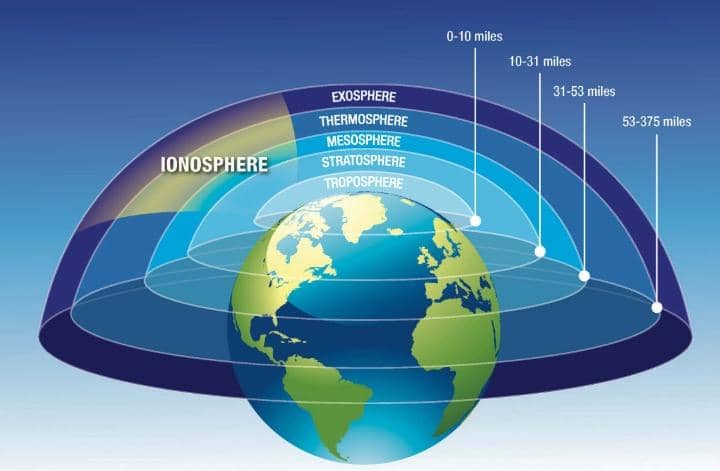The ionosphere, a vital region of the Earth’s atmosphere, plays an essential role in satellite communication and radio signal transmission. Located approximately 30 to 1,000 kilometers above the Earth’s surface, this layer is composed of ionized particles that reflect and modify radio waves, making it indispensable for modern telecommunications.
Understanding the dynamics of the ionosphere is crucial for ensuring reliable satellite operations and effective communication across various platforms.
One of the primary functions of the ionosphere is its ability to reflect radio waves back to Earth. This characteristic enables long-distance communication by allowing signals to bounce off the ionosphere, extending their reach far beyond the horizon.
Before the advent of satellites, radio signals relied heavily on this phenomenon for transmission. Even today, many communication systems depend on the ionosphere to maintain connectivity, particularly in remote areas where direct line-of-sight communication is not feasible.
The ionosphere’s behavior is influenced by several factors, including solar activity, time of day, and seasonal changes. During daytime, solar radiation ionizes gas molecules, increasing electron density and enhancing signal reflection. Conversely, at night, electron density decreases, which can improve signal clarity as the electrical charges become more neutral.
This variability poses challenges for telecommunications engineers who must continuously monitor and model ionospheric conditions to predict potential disruptions in signal quality.
In addition to its role in communication, the ionosphere significantly impacts Global Navigation Satellite Systems (GNSS), such as GPS. Signals from satellites travel through the ionosphere before reaching receivers on Earth. Variations in electron density can cause delays in signal transmission, leading to inaccuracies in positioning data.
To mitigate these effects, modern GNSS receivers utilize dual-frequency signals that help estimate and correct for ionospheric delays, ensuring precise location measurements.
As technology advances and reliance on satellite communication grows, understanding the ionosphere’s complexities becomes increasingly important. Researchers are continuously studying this dynamic layer to improve predictive models and develop strategies that enhance communication reliability.
By monitoring ionospheric conditions and their effects on satellite signals, we can ensure that our global communication networks remain robust and efficient in an ever-evolving technological landscape.

